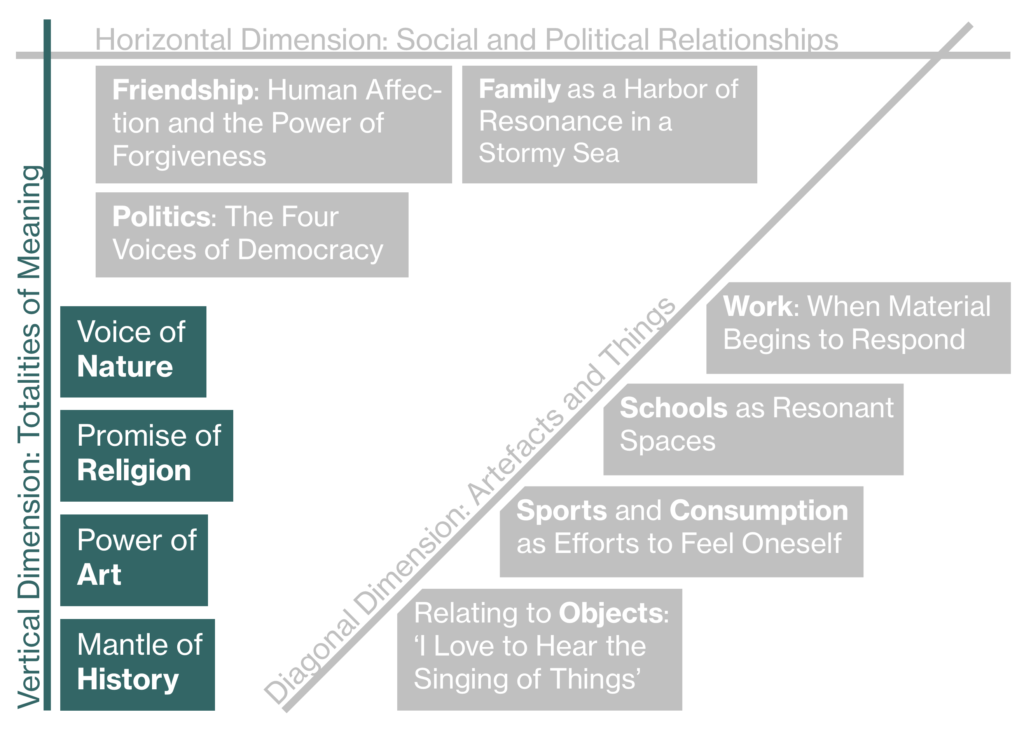Resonance Theory, the Phenomenology of Poetry, and the Work of Tomas Tranströmer
The theory of resonance (Hartmut Rosa) is a sociological phenomenology of the good life. It descriptively foregrounds structures of relating to the world, claiming that deeper affect and emotion have a structural underpinning. And, standing in the tradition of critical theory, it examines how modern life is unable to sustain such structures of resonance. Alienation abounds where meaningful relationships to the world are (made) impossible.
Meaning is also at the heart of the strong programme of cultural sociology (Jeffrey Alexander/Phil Smith). It maintains that meaning is a driving factor of social life, permeating across social structural patterns. But while the strong programme sees meaning as symbolic patterns that structure social life, resonance conceives of meaning as a relationship. Resonance is more concerned with form, while culture is more concerned with structural content. These contrasting emphases are the best starting point for integrating the two theories.
I use poetry to do so, especially the works of Tomas Tranströmer. The active, conscious engagement with such poetry almost systematically points to a ‘passive-pathic-affirmative worldview’ that enables resonance. Rosa himself positions art as a key resource in society. Further, Tranströmer’s art is rich in symbolic meaning, and the leitmotif that runs through his work illustrates what can be described as elements of a resonant life. It evokes binaries of: contemplation and domination, affirmation and repulsion, opening and closing. Its narrative structure appeals to the normativity of a good life, which is based on emphasising the former, more humble notion: the contemplative, affirmative, and open relationship to the world. Structural meaning and narrative structure work together here to highlight the essence of sustaining spaces for resonance.
Poetry and Structural Meaning in the Work of Tomas Tranströmer
Why Tranströmer? Tranströmer’s poetry represents the full diversity of a lived life. Its surface draws on all sorts of events, situations, and experiences. But underlying this chaotic surface is a structured depth, a coherent centre that stays stable across the decades of poetic production. This is an organizing structure that lends Tranströmer a view onto the world, a perspective on things as they take place, an evaluative frame on the sacred and profane. And it is the distinct achievement of Tranströmer to find the right surface images—a highly metaphorical form that makes use of ordinary elements of life—in order to convey this depth. I argue that this surface-depth relation perfectly characterizes resonance. It provides a language for Rosa’s abstract theory, particularly in respect to those spheres that Rosa terms totalities of meaning: nature, religion, art, and history.

Poetry and the Sociology of Literature
The sociology of literature is oddly silent about poetry. This is perhaps due to the fact that poetry is but a niche in contemporary society. It is a form of art that seems to concern only a few individuals and that is responsible for a somewhat negligible material sphere. Poetry might also appear to be out of touch with the dominant sociological issues of power, material inequity, and conflict. This is far from true. The recent turn towards meaning in the sociology of literature preconfigures that poetry can be conceived as a significant sphere in society. I draw on this line of inquiry, particularly directions such as a strong sense of cultural intermediation, literature as life laboratory, but also poetic sociological thinking.
Reach out if you’d like to find out more: marcel.knoechelmann[at]yale.edu